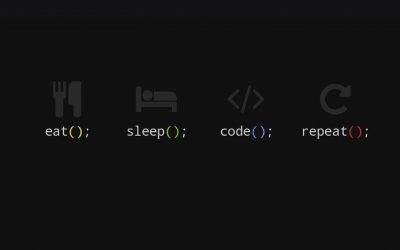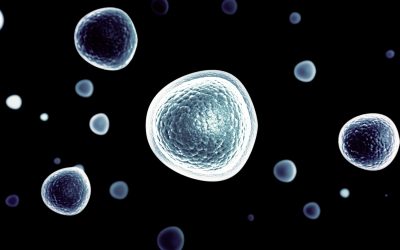About our research
The 3-dimensional layout of the genome, including interactions of chromatin with the nuclear lamina at the nuclear periphery, plays an important role in the establishment of gene expression programs that govern lineage-specific differentiation and cell identity. In adipose tissue, populations of adipocyte progenitors (also called adipose stem cells, or ASCs) give rise to lipid-storing white adipocytes or energy-dissipating (thermogenic) beige adipocytes. White adipocytes also have the ability to convert to beige adipocytes under cold exposure. We study how 3D enhancer connectivity, chromatin accessibility to transcription factors, transcription factor binding dynamics, and nuclear lamina-chromatin interactions together contribute to the regulation of adipose stem cell fate, using well-established in vitro adipose differentiation systems.
Laminopathies are lamin-linked diseases that include muscle dystrophies, progeria and partial lipodystrophy of Dunnigan-type (FPLD2). Deficiencies in lipid storage capacity of adipocytes in patients with lipodystrophy limit fat tissue expandability and exposes other organs to lipotoxicity. We study how lamin A mutations causing FPLD2 affect nuclear architecture, genome organization and transcription factor behavior during adipogenesis, and how this impacts adipocyte function.
Cancer metastasis, including the epithelial-to-mesenchymal transition (EMT) involves nuclear lamins, but to what extent and how remains unclear. We investigate how lamins regulate chromatin architecture and gene expression programs triggering cancer progression, including EMT. We are testing how we can exploit this knowledge to develop novel therapeutic approaches.
We combine molecular/cell biology, microscopy imaging, functional genomics and bioinformatics approaches using patient cells, adipose stem cells, in vitro EMT models, and cancer cell lines.
Our lab’s research history in brief
- RNA splicing events during white and beige adipocyte differentiation (Hazell Pickering 2024 Front. Endocrinol)
- LncRNA HOTAIR and adipocyte function (Potolitsyna 2022 Sci Reports; Potolitsyna 2022 BMC Genomics)
- Euchromatic active regions and enhancer connectivity in lamina-associated domains (LADs) during early adipogenesis (Madsen-Østerbye 2022 Genome Biol; Madsen-Østerbye 2023 Genes)
- LADs during the circadian cycle (Brunet 2019 Front Genet) and modeling of chromatin-lamina interactions (Brunet 2020 Nucleus)
- 3D genome modeling with Chrom3D (Paulsen 2017 Genome Biol; Paulsen 2018 Nature Protoc): https://github.com/Chrom3D/Chrom3D and TAD cliques during adipose differentiation: (Paulsen 2019 Nature Genet; Liyakat Ali 2021 BMC Genomics)
- Laminopathy-causing lamin A mutation deregulates endothelial and adipogenic differentiation (Briand 2018 Hum Mol Genet; Oldenburg 2017 J Cell Biol; Oldenburg 2014 Hum Mol Genet)
- LADs during adipose differentiation (Lund 2013 Genome Res; Lund 2015 Nucl Acids Res; Rønningen 2015 Genome Res); EDD package for LAD detection: https://github.com/CollasLab/edd
- Deposition of histone variant H3.3 into chromatin (Delbarre 2010 Mol Biol Cell, 2013 Genome Res, 2017 Genome Res; Ivanauskiene 2014 Genome Res)
- Epigenetic patterning of developmental gene expression (Lindeman 2011 Dev Cell; Andersen 2012 Genome Biol) and adipocyte differentiation (Boquest 2007 Stem Cells; Sørensen 2010 Mol Biol Cell; Shah 2014 BMC Genomics; Rønningen 2015 Genome Res)
- Chromatin immunoprecipitation (ChIP) for small cell numbers (Dahl 2008 Nature Protoc; Dahl 2009 Genome Biol)
- Cell and nuclear reprogramming (Håkelien 2002 Nature Biotech; Taranger 2005 Mol Biol Cell; Freberg 2007 Mol Biol Cell)
- Disassembly and reformation of the nuclear envelope (Steen 2000 J Cell Biol; Steen 2001 J Cell Biol; Martins 2003 J Cell Biol)
Our current topics
'
-

Metabolic & epigenetic disorders of adolescence sleep deprivation
Using mouse models of sleep deprivation, we are studying how the detrimental effect of adolescence sleep deprivation on adult metabolic health is epigenetically encoded during adolescence and is recalled later in life.
-

Nuclear lamina-transcription factor-microProtein interplay in cancer
We combine molecular/cell biology, imaging and genomics approaches to determine how nuclear lamins and microProteins regulate pioneer transcription factor activity and transcription factor networks implicated in EMT and cancer metastasis.
-

Chromatin architecture in laminopathies
We study how mutations in lamin A/C affect spatial chromatin organization, the epigenome and gene expression regulation in adipose progenitors and adipocytes; we also examine the impact of mutations causing muscle dystrophies on chromatin and gene regulation.
-

The 3D epigenetic control of the white / beige adipocyte identity
We examine 3D epigenetic mechanisms regulating progenitor fate specification in adipose tissues, as well as white vs. thermogenic beige adipogenesis.
